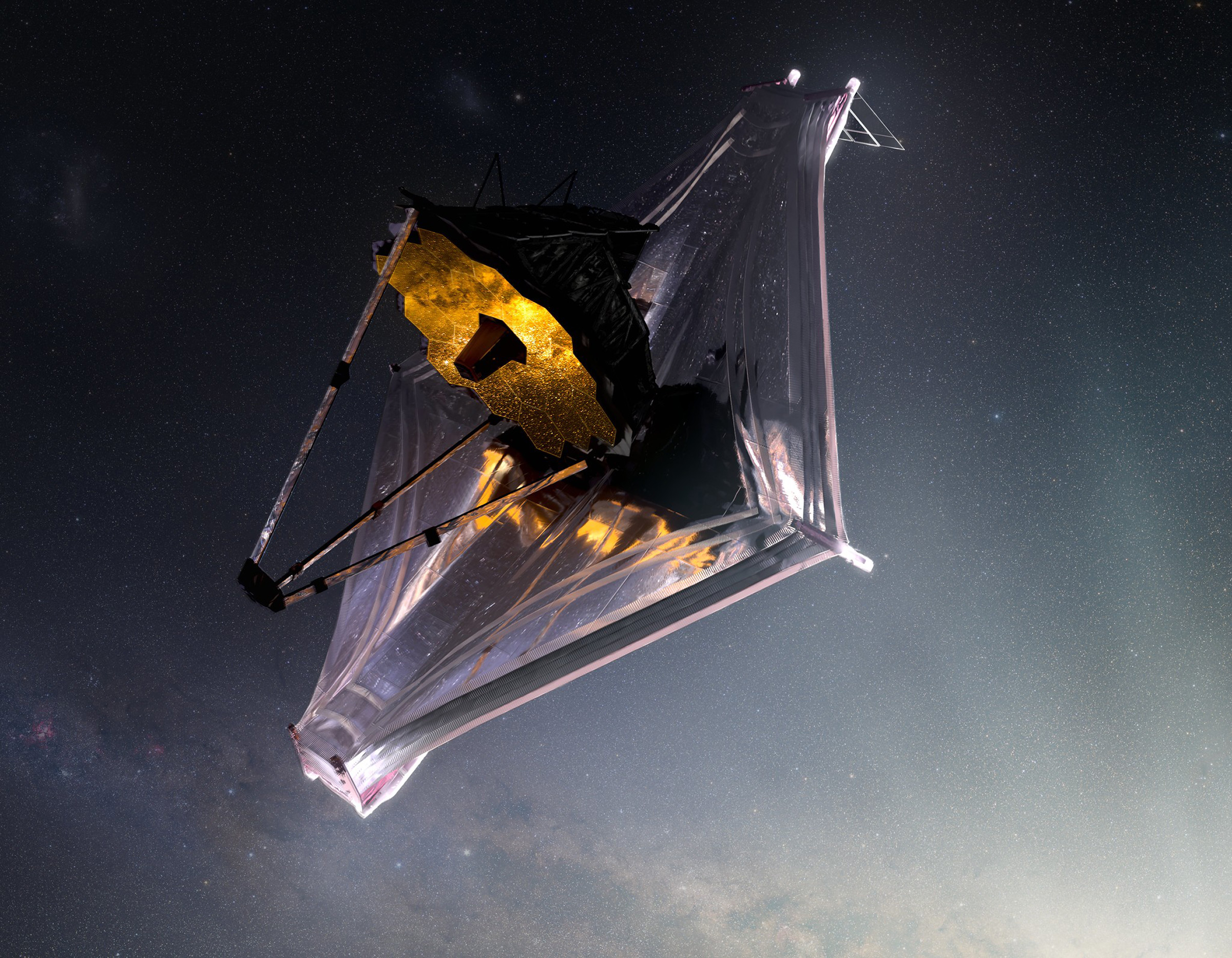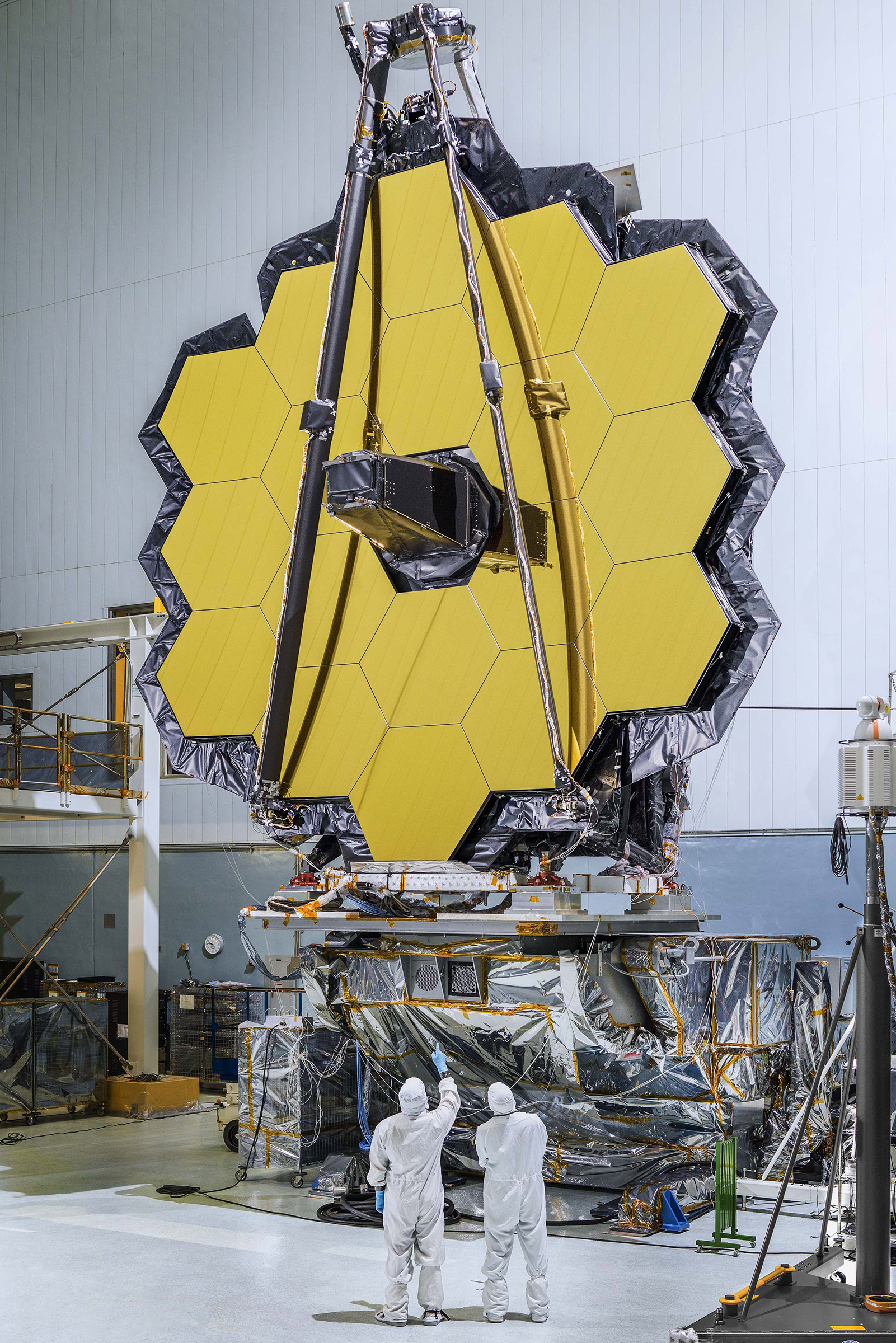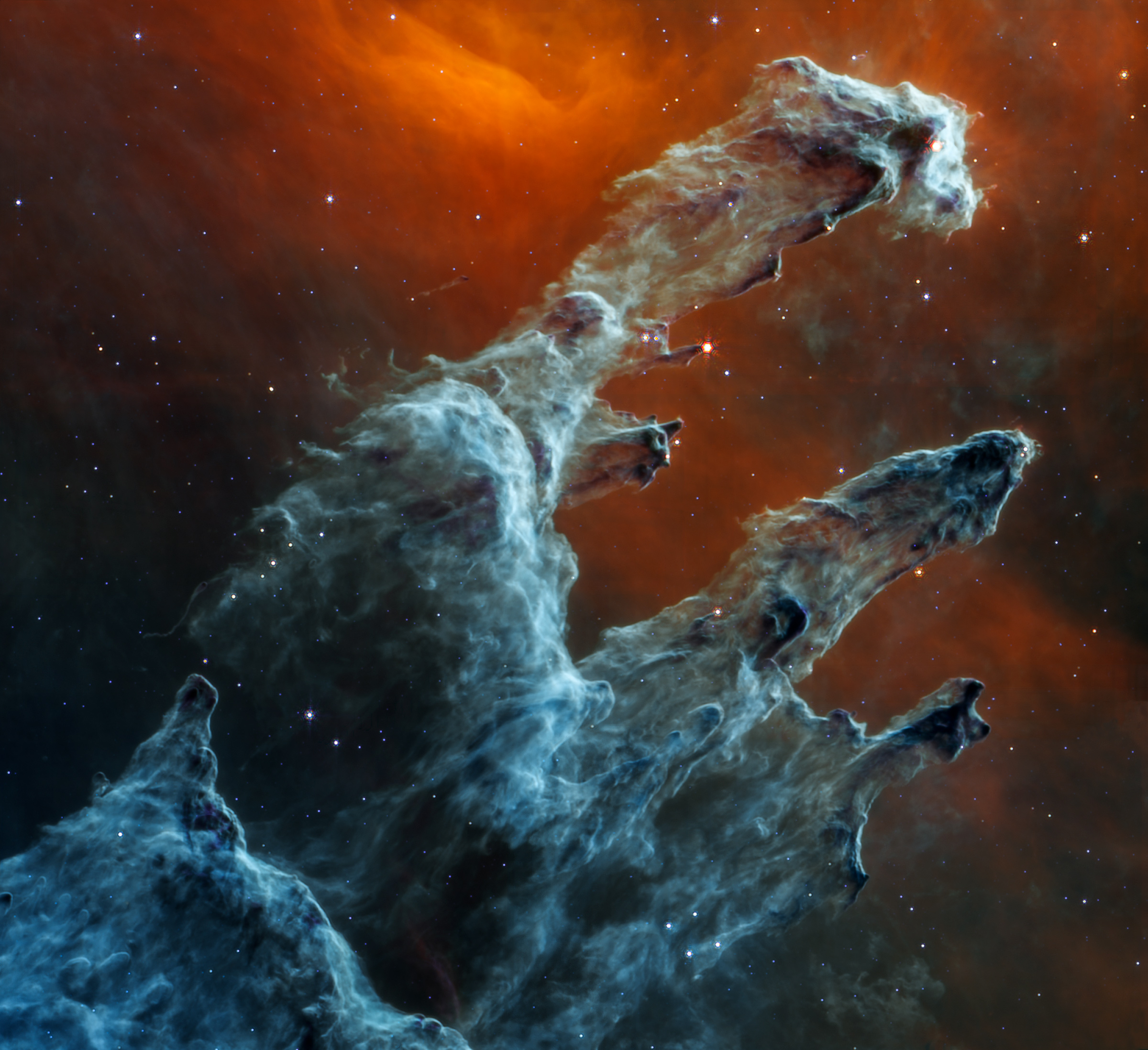Four years ago, Gregory Robinson wanted nothing to do with what might be the greatest spacecraft ever built. It didn’t, at the time, seem like it would ever actually become what it was promised to be: a machine that would take images from space, return them to Earth, and gobsmack the public with their clarity and depth and sheer celestial beauty—the kind of beauty that could, even briefly, stop a fraught and fractious species like ours from the daily messes we make of our world and leave us thinking, just once, You know what? When we try, we can do something truly grand.
What the spacecraft did seem like at the time was a massive white elephant, one that a man in Robinson’s position would not want to go near. For one thing, it was grossly over budget—with a sticker price that had risen from an initial estimate in 1995 of just $500 million to $8.8 billion. For another thing, it was years behind schedule. Its launch was originally set for 2007, and here it was the spring of 2018 and still nobody could say exactly when it would leave the ground. And finally, Robinson, who was at the time NASA’s deputy associate administrator of programs, liked the job he had just fine—overseeing no fewer than 114 NASA spacecraft either already flying or in the development pipeline.
And now, here came his boss, NASA associate administrator Thomas Zurbuchen, offering him a dog of an assignment: give up all of those fine spacecraft with their fine missions, and take over as program director of the James Webb Space Telescope—a generational project, yes, but with many blown deadlines and bloated costs and all the headaches that came with them. The telescope’s launch, at the time, was set for less than half a year away—October 2018—and once again it looked as if it would miss its target.

“We have some major challenges,” Robinson recalls Zurbuchen saying to him. “We’re starting to realize we may not make our launch date.” Zurbuchen then got to his point, asking—more like insisting, as Robinson recalls it—that he take over the reins of the project. “You’re the right guy to do it,” Zurbuchen said. “We’ve looked at a lot of different people, and you’re the right guy.”
Zurbuchen was impressed not just by Robinson’s technical acumen, but also his skills with a workforce. “The majority of problems we encountered with Webb during its [previous] six years were people and team problems,” Zurbuchen said in an email to TIME. “Technically, most issues had been resolved, but the team had struggled to come together and execute seamlessly. This is where Greg’s strengths really lie. He can walk into a meeting or launch room and walk out knowing what the energy of the team is, and also what hinders their progress.”
All the same, Robinson resisted the Webb offer for weeks before ultimately relenting to Zurbuchen’s entreaties. Four years on, the decision looks like an eminently good one. The seven-ton James Webb Space Telescope, with its prodigious 6.5-m (21.3 ft.) main mirror, is now situated in space 1.6 million km (1 million miles) from Earth, peering deeper into the universe, and thus further back in time, than any other space observatory ever built. If the Hubble Space Telescope has been NASA’s astronomical workhorse for more than 30 years, the Webb is the newer, grander, more powerful racehorse.
“Until Webb, Hubble was the best in the business,” says Robinson. “But to see the clarity, the differences in the images we’re getting now, it just blows my mind.”
The public’s awed reaction has mirrored Robinson’s own; the Webb telescope has come to represent something larger and grander than all of us. The long effort to get the spacecraft built, the mission it was assigned—searching for clues to the very origins of the universe—have worked a certain transcendent good. From the hands of a team of thousands of researchers, engineers, and factory-line workers came a ship that, if it doesn’t exactly kick open the doors to the secrets of the cosmos, at least parts the curtain. “This beautiful machine,” says senior project scientist John Mather, “has worked in every way that it was supposed to work.”
That beautiful work Webb is doing is a function of the wavelength in which its mirror sees the universe. Hubble scans space principally in the visible spectrum—the same wavelength with which the human eye sees. That allows it to peer 13.4 billion light-years away, seeing light that has been traveling to us for 13.4 billion years—or just 400 million years after the Big Bang. But Hubble is blind to what happened in that critical earlier phase of the universe’s infancy, because visible light from so far away can’t penetrate the intervening dust of interstellar space.
Infrared radiation, however, cuts right through the dust, allowing a telescope that, like Webb, detects energy in that frequency to see as far as 13.6 billion light-years distant. The additional 200 million years seems like a small difference, but it’s not.
“The difference between what Hubble and Webb [see] is not like comparing someone who’s 70 years old to somebody who’s 71 years old,” said Scott Friedman, an astronomer with the Webb team, in a conversation with TIME last year. “It’s like comparing a baby who’s 1 day old to a baby who’s 1 year old.”
Hubble, launched in 1990, had been in space for no more than five years before NASA began drawing up plans for an infrared observatory that was then called the Next Generation Space Telescope. The idea was a bold one, but it seemed snakebit from the start. Nobody had ever built a telescope like this before, and the research and development process was slow and painstaking, with the original half-billion price tag climbing steadily over the years—to $1 billion in 2000; $2.5 billion in 2004 (by which point the telescope had been renamed in honor of former NASA administrator James Webb); $4.5 billion in 2006; $8 billion in 2011; and $8.8 billion when Robinson took over in 2018.

That made Robinson’s job a potentially thankless one, but he was not working alone. At the time he took command of the project, NASA had already empaneled an independent review board to help set Webb to rights at last. Working with the board, Robinson improved the project’s efficiency rating—a ratio of scheduled tasks to completed tasks—from 55% to 95%. He also made the process more transparent, holding regular meetings with the White House Office of Management and Budget as well as appropriations committees in both houses of Congress.
And Robinson made it a point to tell some hard truths: Webb, he frankly conceded, was going to be later still—not launching until the end of 2021—and would cost more still, with a final price tag of $10 billion. But those would be the drop-dead limits.
“I tried to be a little more realistic,” Robinson says. “We tend to come into these things with a hero syndrome, and that can get you into trouble. I tried to institute better schedules, better milestones. Our rule was ‘Go fast, but don’t rush.’”

On Christmas Day 2021, the James Webb Space Telescope at last left the ground, aboard a European Space Agency (ESA) Ariane 5 rocket launched from Kourou, French Guiana, in South America. Hitching a ride with the ESA was a necessity because of the Webb’s size—which is too big for any rocket in the American fleet. Only the Ariane 5’s 5.4-m (17.7 ft.) fairing could accommodate it.
Launching from French Guiana came with its own challenges. Robinson and the rest of the NASA team were on-site for three weeks before liftoff as the telescope was loaded into the rocket and countdown rehearsals were run again and again. The jungle environment required the crew to take anti-malarial pills, tolerate ants in the hotel rooms, and stay alert to the stray jaguar that would appear on or around the launch site.
“One night, one of our engineers came back to his hotel and found a 6-ft. snake in his room,” says Bill Ochs, Webb’s now retired project manager.
Once in space, the telescope required three months before it could unfold its mirror and bring all of its observation instruments online. The process required successfully overcoming 344 so-called single-point failures—a pulley or actuator or switch that, if it went awry, could all by itself doom the mission. The biggest challenge involved unfurling the Webb’s tennis-court-size sunshield—a structure made of five layers of foil-like Kapton that keeps the temperature of the telescope’s mirror and instruments at a frigid –223°C (–370°F). That bitter temperature is necessary to prevent stray heat from distorting Webb’s infrared images the way stray light can ruin optical pictures. All 344 single-point failures worked perfectly and at last, in March 2022, the telescope switched on its 6.5-m eye and captured its initial image.
For that first picture, engineers at Webb’s mission-control center at the Space Telescope Science Institute (STScI) in Baltimore turned the telescope toward an entirely unremarkable star that goes by the decidedly technical name TYC 4212-1079-1. The choice was a practical one: TYC 4212-1079-1, some 2,000 light-years from Earth, has no nearby neighbors, allowing Webb to focus on it alone.
At first the image was a mess, with all 18 of the mirror segments capturing their own image of the star. “Imagine an a cappella chorus where everyone has their own key and their own song,” says Webb’s operations project scientist Jane Rigby. But over the course of several days the team focused the mirror, adjusting the position of each segment on the order of nanometers—less than the width of a human hair—until the 18 blurred images resolved into a single, impossibly bright and sharp one, with hundreds of galaxies photobombing it in the background.

“I can tell you that I’ve worked with geeks my whole life, and there was no better scene,” says Robinson, who was at the STScI at the time. “To see a bunch of people just falling over themselves with joy, it was a beautiful thing. I’m glad I was a part of it.”
In July, the whole world got to experience a similarly sublime moment when the Webb team unveiled four eye-popping images, including a field of galaxies known as SMACS 0723; the Carina Nebula—one of the cosmos’ great nurseries for new stars—located 7,600 light-years from Earth; and Stephan’s Quintet, a cluster of five galaxies first imaged by more primitive telescopes in 1877. The big reveal took place at a White House event attended by multiple members of the Webb team.
“These images are going to remind the world that America can do big things, and remind the American people—especially our children—that there’s nothing beyond our capacity,” President Joe Biden said during the event. “We can see possibilities no one has ever seen before. We can go places no one has ever gone before.”
With that early hoopla passed, the telescope has now entered its operational phase and is settling down to do more than just deliver eye candy. Astronomers from around the world who want to conduct research on the telescope are invited to submit proposals for observation time, and the Webb team expects to receive 1,000 such pitches per year—with only enough telescope time available to accommodate about 200 of them.
Despite that selectivity, Robinson—who has since retired, calling Webb the “capstone” of his career—sees the telescope as very much a democratic instrument. It may be owned and operated by NASA, but, Robinson says, “29 states in the U.S., 14 countries, and over 10,000 people touched this telescope.”
